Viral video research. How to create? How to promote?

I propose to readers of Habrahabra a transcript of performance at the Cannes Lions international advertising festival John Ratcliff, founder of Mozayic, Mofilm (previously Google and YouTube) and Dr. Karen Nelson-Field, director of strategic development at the University of South Australia Business School (translated from English ).
Until recently, YouTube was the only player in the online video market, but over the past few years, companies such as Verizon, Disney, Amazon, Twitter and Facebook have launched their own incredibly strong online video platforms. We would like to understand why this happened?
When Facebook just started counting the number of video views on their platform (in September 2014), the figure was one billion views per day. And just a year later, they received four billion views a day. We see an explosive growth of 4 times in just one year. Snapchat, which had almost no online video two years ago, now comes to two billion views a day. In YouTube, last year, the number of views increased by fifty percent, reaching, according to our estimates, up to 7 billion views per day.
')
What are the key drivers of this growth?
The first is access to the Internet . Access has fallen in price in the past few years. According to Cisco, in 2009 the average speed in the world was 3.9 megabits per second, in 2014 the speed increased to 20 megabits per second, and by 2019, according to Cisco estimates, it will be 40 megabits per second.

If you wanted to download an HD movie in 2009, it took about an hour, in 2014 this time was reduced to 10 minutes on average around the world, and by 2019 it can be done in five minutes. If you have access to Google Fiber, then downloading an HD movie will take 10 seconds in cities where this technology is supported.
The second factor is “devices . ” Currently, there are about 3 billion smartphones in the world. A study by Erickson says that by 2020 there will be 6 billion smartphone users.
The third factor is Moore’s law . He says that the computing power of devices doubles approximately every 18 months. That is, everything that happened in the computing power over the past 40 years will happen in the next year and a half.
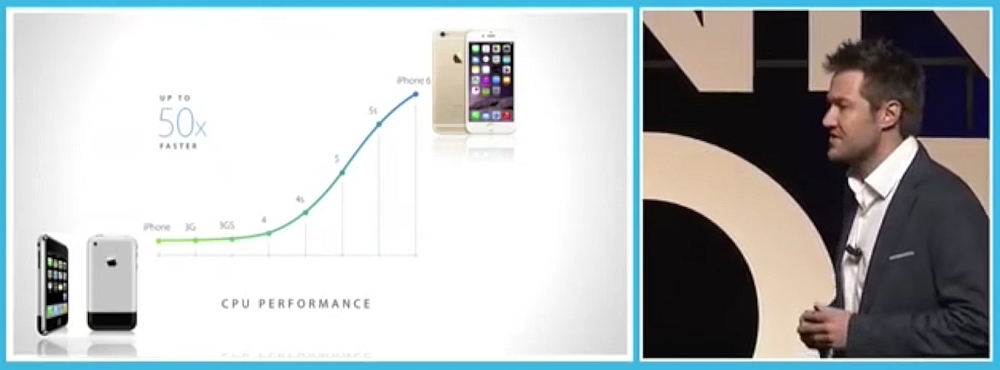
Apple's chart shows that the speed of the iPhone 6 processor has increased 50 times over the first iPhone. This is a fundamental shift.
AD5 conducted a study among people aged 13 to 24 years old and found that this age group in the United States watches 8 hours of classic TV and 23 hours of online video.
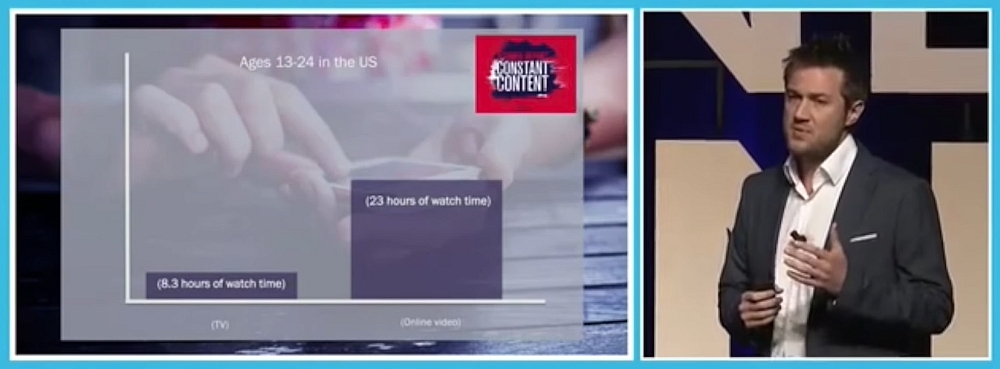
At the same time, we see a large-scale reduction in the TV audience. In my childhood, of course, I watched MTV a lot, but the reality is that today's young people otherwise consume video content.
The study, conducted by Jeffries and Nielsen, analyzed the viewing audience of Viacom and recorded a 34% reduction in the MTV audience, a 34% reduction in the Nickelodeon channel and a 30% reduction in Comedy Central.

My vision of the future is that people themselves will decide what and when they will look.
Viral video research results from Dr. Karen Nelson-Field
Our video content research took 2 years and 35 professionals worked on it. The main findings of the study:
- A video that evokes positive emotions has only a few percent more viral effect than a video that causes negative ones. Those. People share such videos only slightly more often.
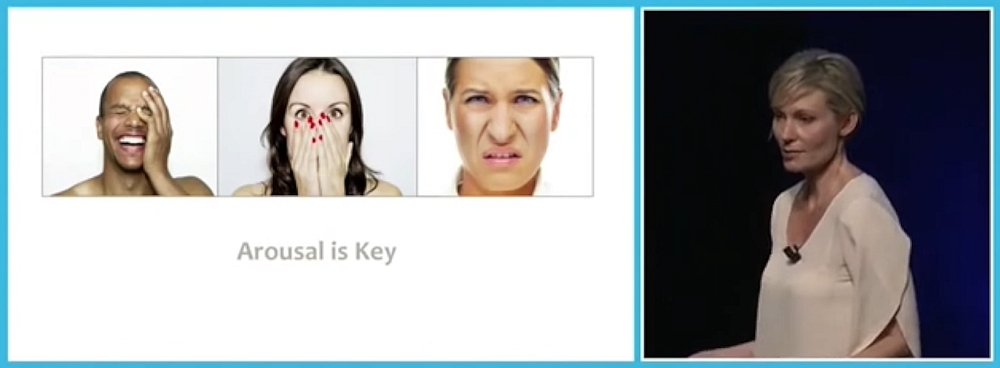
- Use in animals video. The presence of a dog in the video does not solve anything, but decides how much sparking emotions this video with the dog causes.
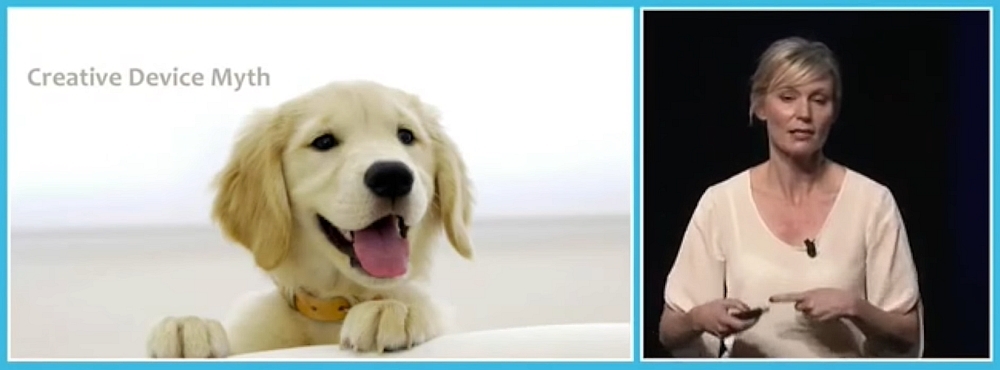
- The presence of the brand in the video and how early it appeared on the screen does not affect the virality of the video, whether people share it or not. Proper integration of the brand in the content is very important and justifies the investment in the creation of video. On the other hand, if you do not brand your content, then by such actions you simply warm up the market for your competitors.
I urge to change my opinion from “brand is something extra to video, alien” to “brand is the key star of your video”.
Different models in content creation
A few years ago, the classic video development scheme at an advertising agency was a sequence of 3 divisions: first a creative division, then a production division, then a media division.
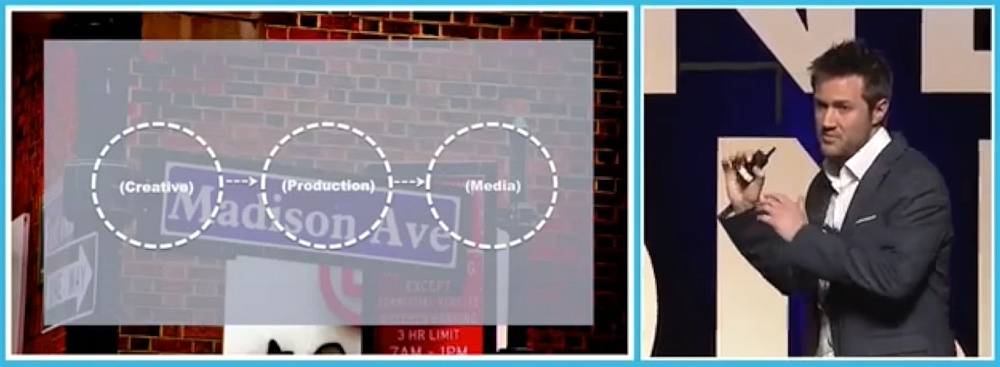
In such a model it was impossible to hope that a copywriter (creator) would communicate with the media team in order to understand where and how the developed content will be used.
We believe that if you gather in the same room people who create videos and people who are involved in distributing content, you can get a really deep understanding of what your audience likes and offer them the right solution.
Buzzfeed, I believe, is one of the largest companies in the world now, which successfully uses this model of work. If you talk to the chief editor of the Buzzfeed Video channel, then make sure that he knows perfectly well what exactly works for his audience and what exactly does not work. They get "rich feedback" from their users.
In our opinion, such an organization of work is more successful than in traditional advertising agencies, where the creative team often cannot understand viewers' behavior so well.
Video Promotion
This area of knowledge in advertising is the most new and very rapidly changing area. 2 years ago there was no video on Facebook. Now there are a lot of new strong platforms that allow you to promote your branded video.
First you need to figure out what is meant by “watching” a video clip? For example, the Vine platform considers viewing six seconds of video. Instagram - 15 seconds. Paid video viewing on Facebook is only 3 seconds. A paid viewing of YouTube video is 30 seconds.
It is quite difficult for marketers today to navigate in such a complex space of various platforms in order to choose the right strategy for promoting their video.
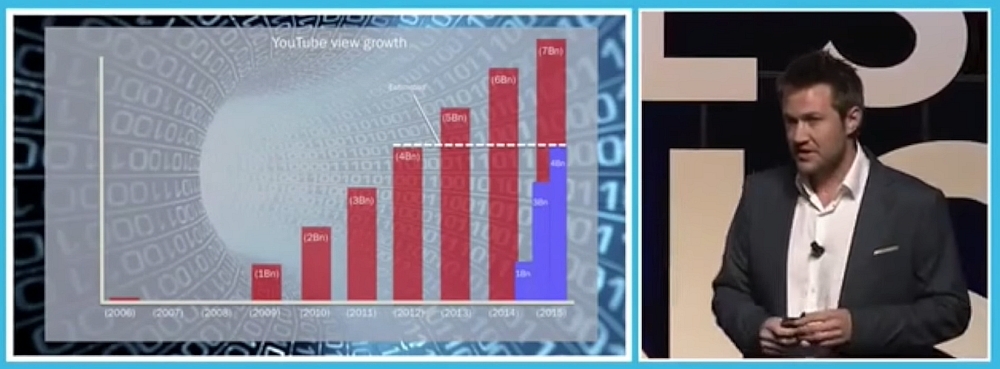
For YouTube, it took seven years to get to 4 billion views, for Facebook it took less than a year to get the same figures.
What is the difference between videos on Facebook and YouTube
There is a big difference in the “detectability” of a video .
If you upload a video to Facebook, and then someone wants to find your video, it will be quite difficult to do if it is not in the tape of your friends. And if you upload a video to YouTube, then anyone can easily find it by keywords.
"Lifetime" movie . Facebook tends to get the most views early in the launch of the video. But the magnitude of the “long tail” of YouTube views is much better because of the better “detectability” of this video.
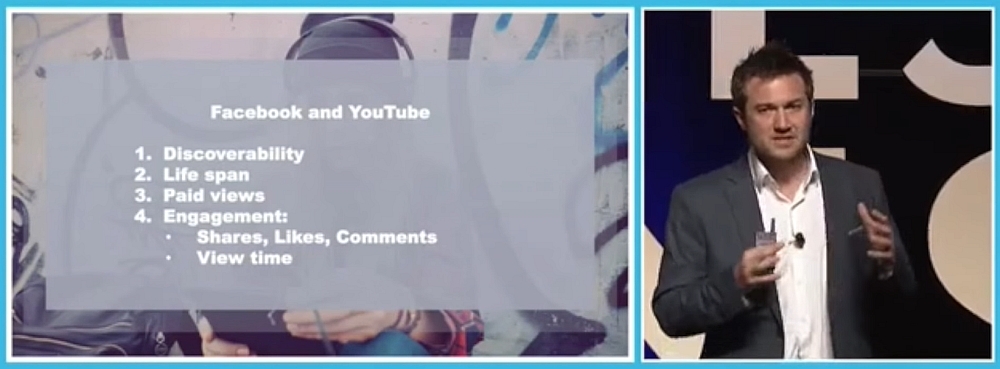
"Engagement" . For branded videos, the number of comments, likes and shares on Facebook is much more than on Youtube. However, the viewing time in Youtube is 3-4 times longer than in Facebook. Many tests have been done to confirm this.
What is more important for the promotion of video "creative" or "seeding"?
In our study, we tested both custom and branded content.
For many years I have heard the thesis “creative is king”, but our research shows that creative has not the strongest influence on the “video distribution” indicator. True sowing decides a lot more to distribute the video in the future.
A rather profound misconception of marketers of recent years, in our opinion, is to compare video distribution with the epidemic of a virus. Viruses are spreading like an avalanche, constantly increasing the coverage of the epidemic, and the reality of video distribution is such that the number of share quickly decreases in time and the spread goes out because the indicator “how many people shared from those who watched” is much less than you can imagine. Average: 1 share per 24 views. And for avalanche virus distribution, an indicator of at least 12 share per 24 views is required.
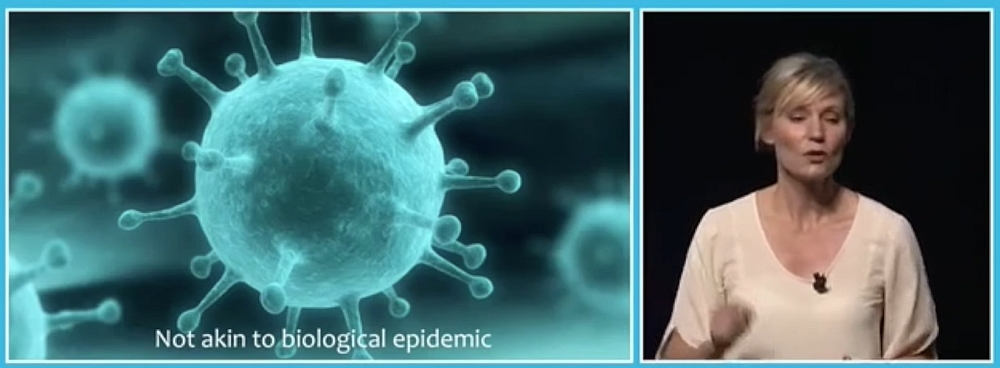
In reality, if you start promoting your video from a small seeding base, the attenuation of views will be much faster than you expect.
Imagine that you paid 1000 views, and the ratio of share: 24 to 1, then count how many additional views you get? If you start with 100,000 purchased views and the viral coefficient is the same 24 to 1, consider how much additional share and views you will receive.
The reality is that sowing plays a much larger role in video promotion than many marketers think. It is unpleasant to be aware of content marketing adherents, who think that if we create good content, people will come and share it. Unfortunately, this never happens.
From our point of view, the analogy should be this: seeding is the king, and creative is the queen. And this does not mean that the content is not important. Creativity may well improve the virus index with “24 to 1”, to less fading.
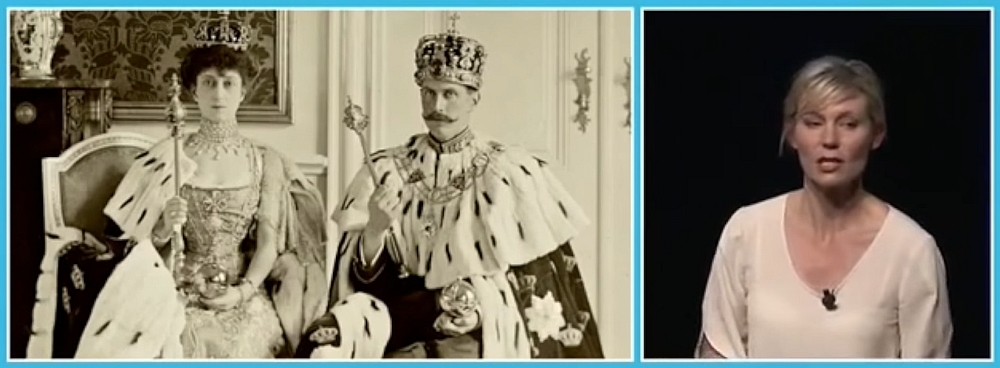
Conclusion
We believe that the future is the widest choice for the user: what he wants to watch, when and where he wants to watch. We believe that the world in which advertisers are trying to interrupt what you are doing to send a message to your address is a thing of the past. We are entering an era of “engagement economics,” in which people will consume not what you envision, but what they like and are comfortable with.
Source: https://habr.com/ru/post/314174/
All Articles